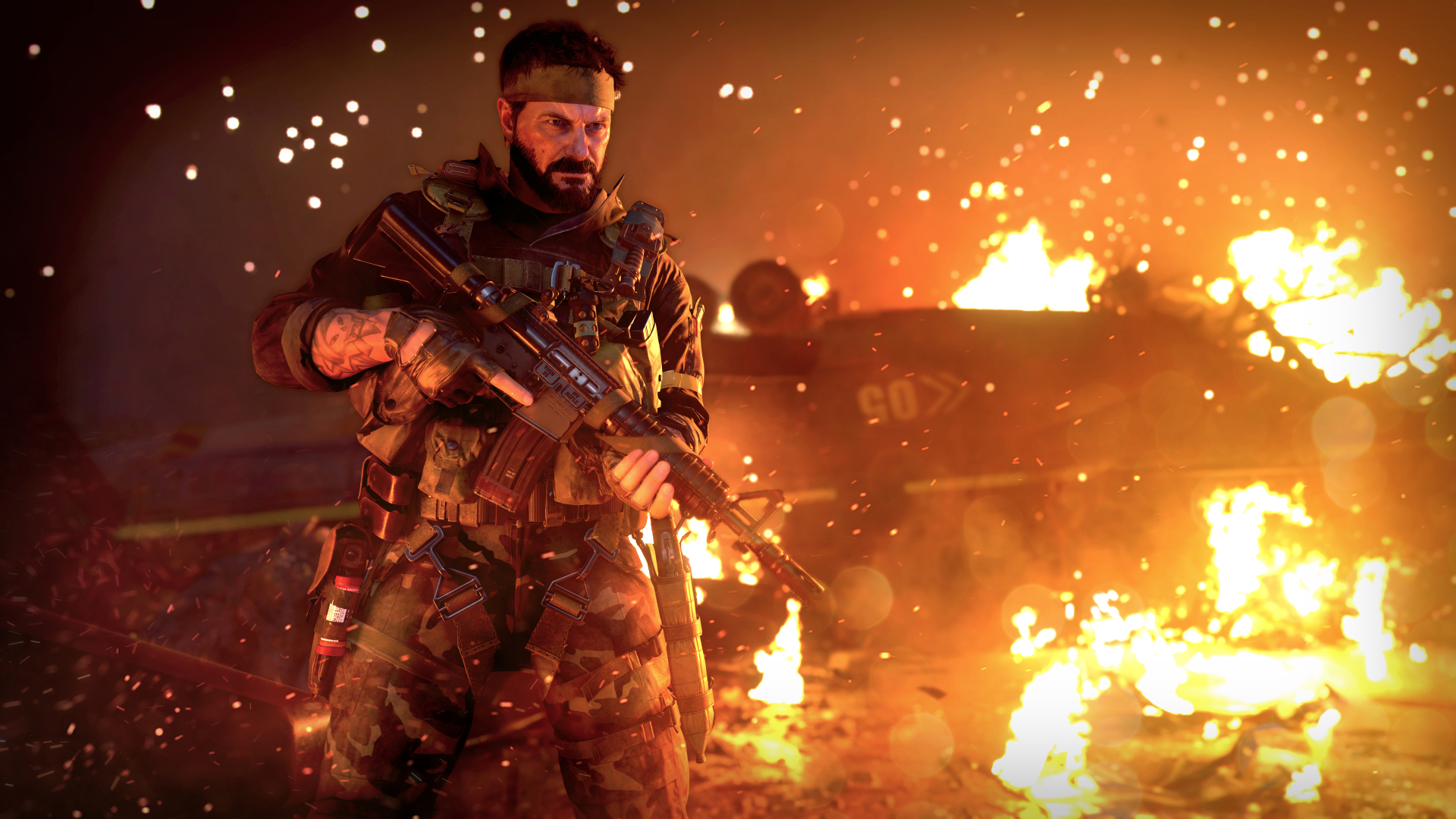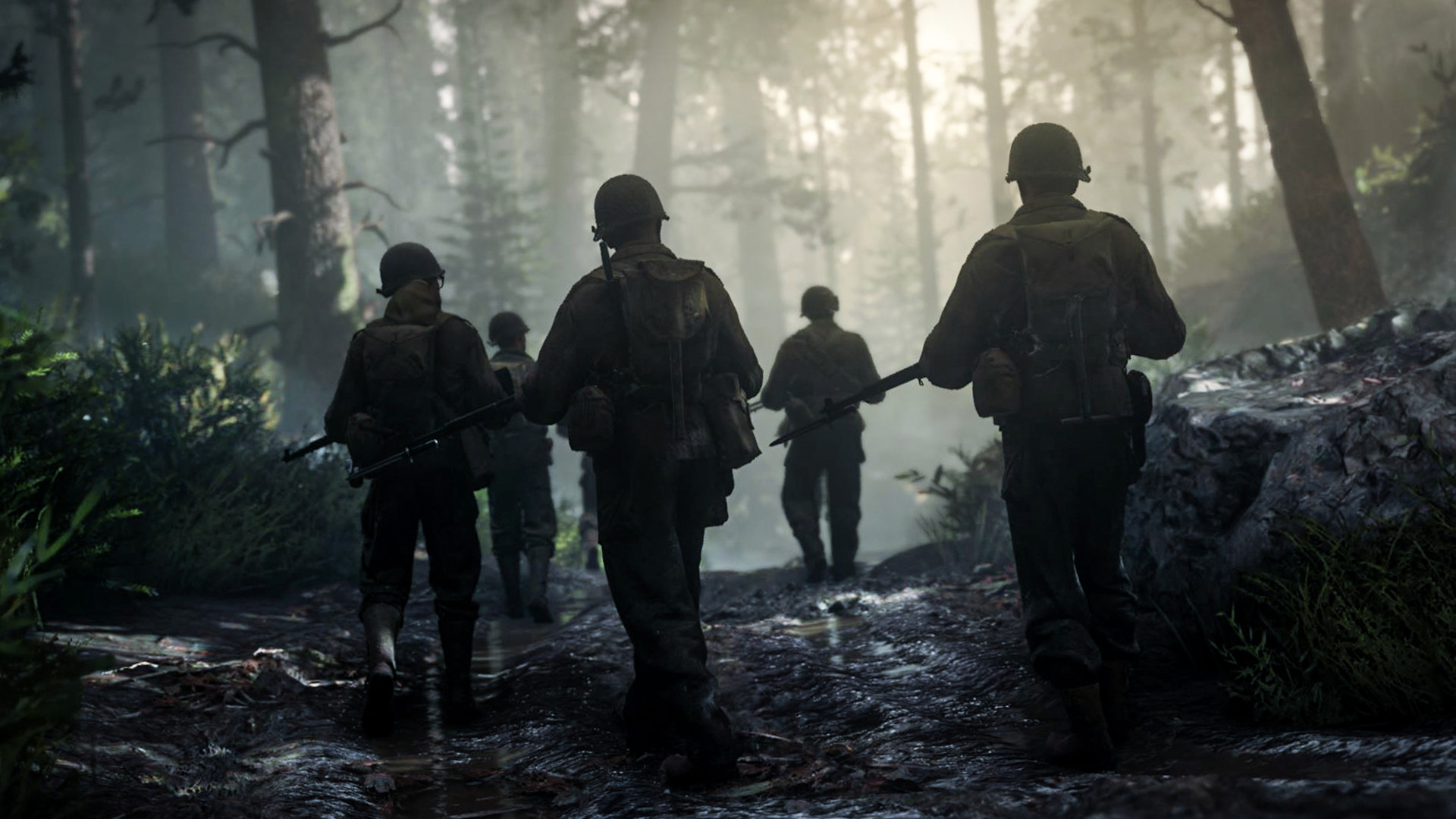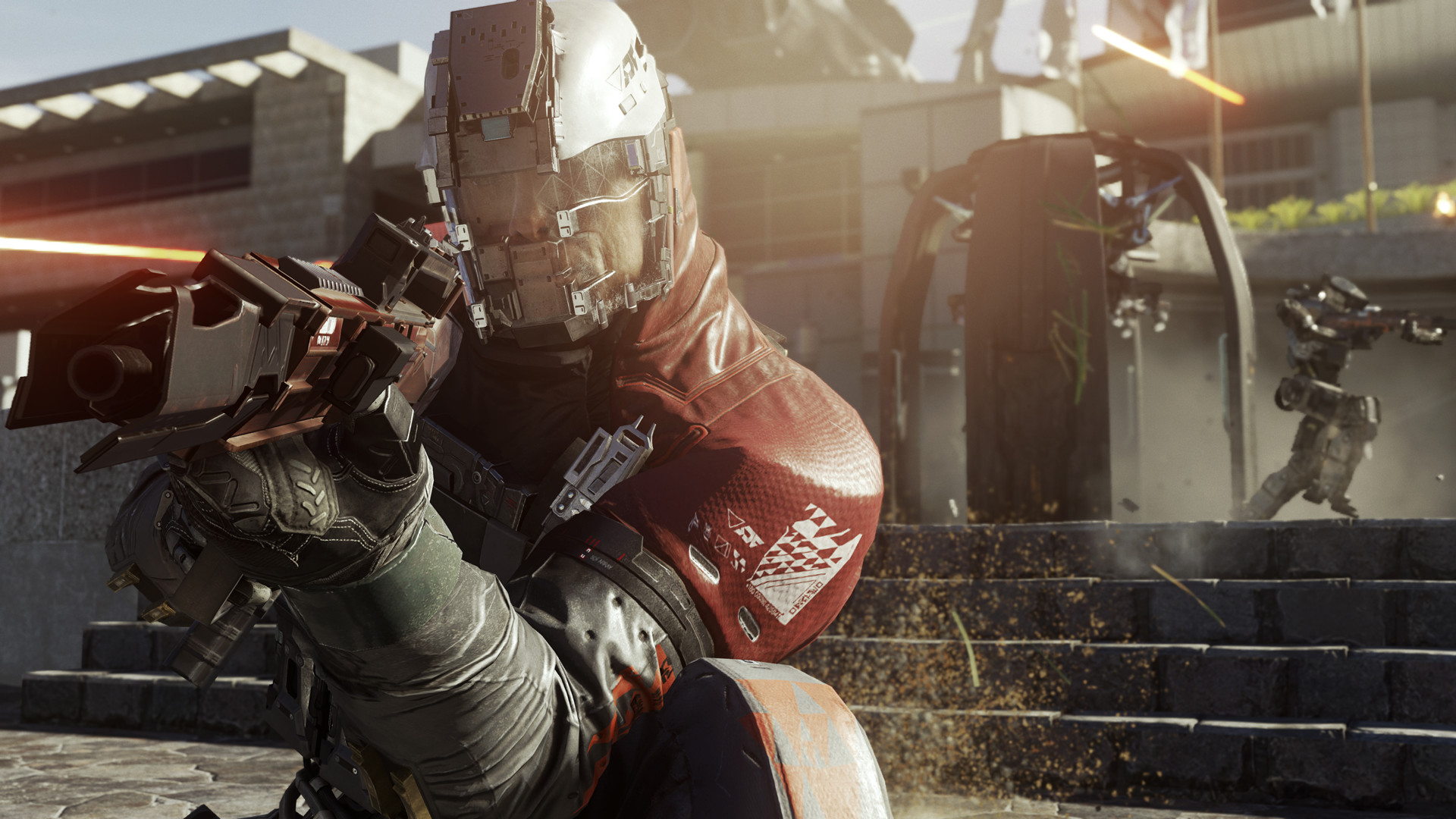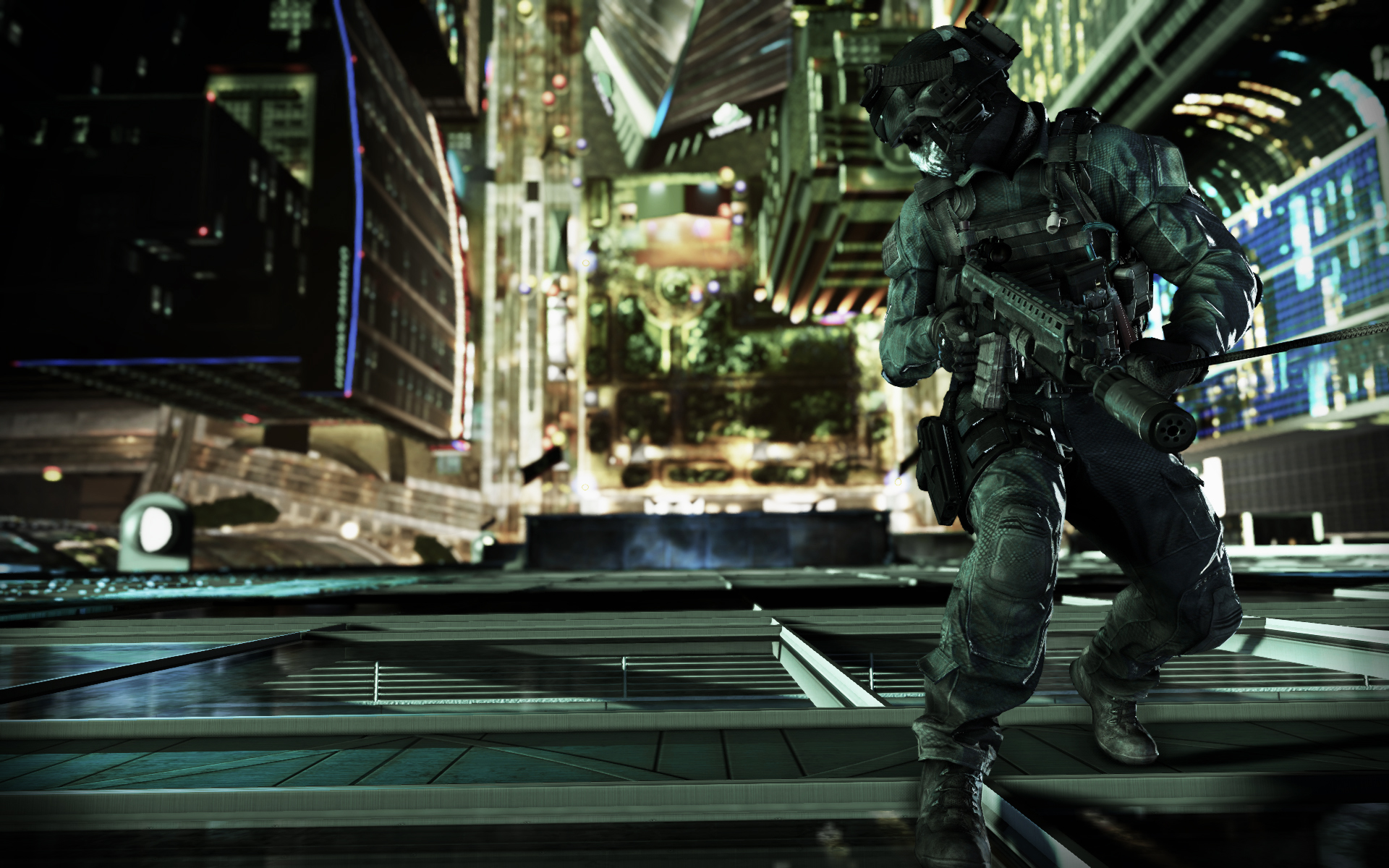[ad_1]
It gets so that you barely hear it, eventually—the constant rattle of machine gun fire that has accompanied Call of Duty campaigns for nearly two decades. First it was the typewriter click of the Thompson, then the factory-line clank of the AK-47—the latter a real test for the eardrums throughout the late 00s, let me tell you. Now, it’s the more refined kick drum of the Kastov 74u. But the action has always remained the same: click to command your weapon to spread lead in a given direction. Perhaps you’ll punctuate the flow with a grenade this time. Probably not, eh. Stick with the classics.
There’s no denying the perpetual appeal of this setup. Even in the tight and linear environs of a COD level, no encounter will ever play out exactly the same way twice. As you and your opponents shift position, like the paddles in a game of Pong, the battlefield throws up implicit, absorbing engineering problems. At what angle can a bullet travel between all these shipping containers and strike only the head of the guard standing on deck? By what degree do you need to lead the target at 300 yards? At 500 yards? And always, a primal question begs to be answered: who is predator, and who is prey? No other game can convey the punch of a direct hit quite like COD.

Yet these are the basic building blocks of the FPS genre. By now, they could be the foundations of a tower of interlocked mechanics that set Call of Duty apart from its peers. Instead, if you play this year’s Modern Warfare 2, you’ll find the equation largely unchanged from 2009’s, er, Modern Warfare 2.
In part, that’s down to resistance from the game’s multiplayer audience. In that sphere, even the smallest alterations to the formula can wreak havoc; just google ‘slide cancel’ and you’ll see how a simple speed exploit can come to define the meta of Warzone.
The biggest backlash came in the early 2010s—when, inspired by the former Infinity Ward team behind Titanfall, Call of Duty developers began to embrace more dramatic movement techniques, designing double jumps and mid-air dashes. By Black Ops 3, skilled players were chaining boosts and wallruns in such a way as to never hit the ground. But this futurism was ultimately rejected by fans, and 2017’s WWII was advertised with liberal use of the phrase ‘boots on the ground’—essentially a slogan in favour of mechanical conservatism.

Unfortunately, that’s had a knock-on effect in the campaigns, too. Any momentum that had gathered over previous entries, either literally and metaphorically, quickly dissipated as the series leaned into reboots. Gone were the tactical advantages of a sci-fi setting, like hackable robots, spider-legged seeker bombs, and anti-gravity grenades that lifted enemies out of cover. RIP.
Body goals
Of course, it’s possible to separate out multiplayer and singleplayer—treating the former as a conservation area, and the latter as a laboratory for the testing of new ideas. It happened that way with Black Ops: Cold War—where, in the campaign only, developer Raven Software introduced a simple but transformative body shield mechanic (opens in new tab). By tapping a key, you could disarm an opponent, grab them by the neck, and march them toward their comrades, letting their torso take the bulk of the fire. Once they’d had their fill of lead, you could pull the pin on their grenade and shove them into a crowd of enemies.
Since you were invulnerable while the animation unfolded, the body shield functioned rather like a glory kill in modern Doom—pushing you to dive forward into danger in order to save yourself. It enabled a new playstyle in a game which, ever since the rise of Halo, had encouraged you to fall back and recharge when under pressure. A solid addition to fold into the COD campaign formula as it moves forward, you might think. Yet last year, when it came time to follow up Cold War, the body shield was missing in action.

There are practical reasons why innovations might fall between the cracks in an annualised series. The responsibility for making Call of Duty campaigns bounces between, at last count, three different lead studios. Cold War’s campaign was the work of Raven; the subsequent game, Vanguard, was made by Sledgehammer; this year’s Modern Warfare 2 is an Infinity Ward production. Who knows: maybe one day, Treyarch will regain its appetite for singleplayer too.
While all these studios share tech and level design lessons—the disguise stealth of this year’s narco mansion recalling both Cold War’s KGB headquarters and WWII’s Nazi stronghold, for instance—development on their campaigns overlaps, so it’s never a simple matter of building on what came directly before.
There’s also a nagging suspicion that Activision thinks of COD as Baby’s First FPS—conscious that every new campaign is an entry point to the genre for a new generation of teenagers. As such, these campaigns are perhaps designed not to overwhelm: holding back on tactical options, freedom of exploration, or too much interactivity full stop. The structure of the new Modern Warfare 2 would certainly seem to back that up: forefronting gallery shootouts, and only expanding your toolset and playspace once you’re deep into the second half of the story.

The most charitable comparison to be made is that Call of Duty is a little like Mario—in which Nintendo regularly introduces new ideas for just a level or two, before chucking them away. No novelty is allowed to outstay its welcome. COD campaigns, too, have always shot for variety above all else, juxtaposing sniper hunts with car chases, aircraft gunning with cramped home invasions.
But long-time players like myself have seen too many good ideas defenestrated in favour of familiar, machine-gunned beats. COD might be first-person cinema, but the truth is that its stories don’t stick in the head unless you’re given something new to engage with—a distinct memory made with the fingers. As long as that’s not happening, its campaigns will never truly surprise us, no matter how many No Russians they pull.
[ad_2]
www.pcgamer.com
